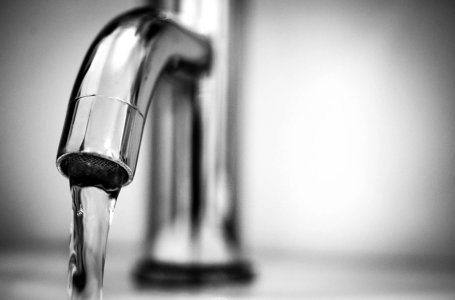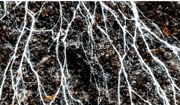Is your tap water safe? What to know about the boil water warning affecting thousands
By
Veronica E.
- Replies 0
Turning on the tap is something we do without thinking—but for nearly 46,000 people, that simple act just became a major concern.
Health officials say the contamination could pose a risk to vulnerable groups, including older adults and young children.
A new boil water advisory has been issued after tests revealed coliform bacteria in the public water system, prompting urgent safety warnings for those affected.
The advisory applies to residents in Arroyo Grande, Grover Beach, Oceano, Pismo Beach, and Avila Beach along California’s Central Coast.
Until further notice, people in these areas are being asked not to drink tap water unless it’s been boiled for at least one minute.
While the situation is being monitored closely, many are wondering how serious this is—and how to stay safe in the meantime.

On April 28 and 29, routine testing of the Zone 3 water system revealed the presence of coliform bacteria.
These bacteria are often harmless, but they can signal the potential presence of more dangerous organisms like E. coli.
As a precaution, the State Water Resources Control Board, San Luis Obispo County Public Works, and local officials issued a "Do Not Drink" advisory.
This is the first time such a warning has ever been issued for this particular water system.
If you live in one of the affected communities, here’s what you should do:
Pismo Beach City Manager Jorge Garcia noted that even filtered or reverse osmosis water may not be safe during this advisory.
“It’s important not to count on filtered water as a reliable way to consume the water,” he said in a video update.
Coliforms are a group of bacteria found in soil, plants, and the intestines of animals and people.
Most are harmless—but if they’re in your tap water, it means your system might be exposed to contamination.
The most dangerous of these is E. coli, which can cause symptoms such as:
According to the Mayo Clinic, symptoms can appear within a day or take over a week to show up.
While most people recover quickly, older adults, young children, and those with weakened immune systems are at higher risk for complications.
If your home is under the boil water advisory:
Local and state officials are working hard to fix the issue.
The State Division of Drinking Water is investigating the source of the contamination, and daily testing is underway.
There’s some good news—recent samples show a downward trend in bacteria levels, which could mean the water is on its way to being safe again.
Still, the advisory is expected to remain in place through Sunday, May 4, or until all test results come back clear.
Boil water advisories are rare in California, but they remind us that even modern water systems can have problems.
Aging pipes, environmental changes, and weather events can all affect water quality.
For seniors—especially those managing health conditions—staying informed and ready is essential.
Read next: Is your water bottle cleaned enough? Doctors reveal this habit you must have!

We want to hear from you. Have you experienced a water advisory before? Do you have any tips for staying prepared or staying calm? Your story could help someone else in our GrayVine community.
Health officials say the contamination could pose a risk to vulnerable groups, including older adults and young children.
A new boil water advisory has been issued after tests revealed coliform bacteria in the public water system, prompting urgent safety warnings for those affected.
The advisory applies to residents in Arroyo Grande, Grover Beach, Oceano, Pismo Beach, and Avila Beach along California’s Central Coast.
Until further notice, people in these areas are being asked not to drink tap water unless it’s been boiled for at least one minute.
While the situation is being monitored closely, many are wondering how serious this is—and how to stay safe in the meantime.

A boil water advisory has residents along California’s Central Coast taking extra precautions to keep their families safe. Image Source: Pexels / ClickerHappy.
What happened?
On April 28 and 29, routine testing of the Zone 3 water system revealed the presence of coliform bacteria.
These bacteria are often harmless, but they can signal the potential presence of more dangerous organisms like E. coli.
As a precaution, the State Water Resources Control Board, San Luis Obispo County Public Works, and local officials issued a "Do Not Drink" advisory.
This is the first time such a warning has ever been issued for this particular water system.
What this means for you
If you live in one of the affected communities, here’s what you should do:
- Do not drink tap water unless it has been boiled for at least one minute and then cooled.
- Avoid using ice made from tap water.
- Be extra careful while bathing—avoid swallowing water, especially for children and older adults.
- Laundry is safe—you can wash clothes as usual.
- Pets need safe water too—give them bottled or boiled (and cooled) water.
Pismo Beach City Manager Jorge Garcia noted that even filtered or reverse osmosis water may not be safe during this advisory.
“It’s important not to count on filtered water as a reliable way to consume the water,” he said in a video update.
Also read: New study reveals surprising truth about tap versus bottled water
Why coliform bacteria matter
Coliforms are a group of bacteria found in soil, plants, and the intestines of animals and people.
Most are harmless—but if they’re in your tap water, it means your system might be exposed to contamination.
The most dangerous of these is E. coli, which can cause symptoms such as:
- Diarrhea (sometimes bloody)
- Nausea and vomiting
- Stomach cramps or pain
According to the Mayo Clinic, symptoms can appear within a day or take over a week to show up.
While most people recover quickly, older adults, young children, and those with weakened immune systems are at higher risk for complications.
Also read: Is fluoride in tap water safe? RFK Jr. raises new questions for the CDC
How to make your water safe
If your home is under the boil water advisory:
- Boil your water at a rolling boil for at least one minute before drinking, cooking, brushing your teeth, or washing dishes.
- Cool the water before using or storing it.
- Use bottled water if boiling isn’t an option.
- Only disinfect with bleach or tablets if instructed to do so by local health officials.
Also read: Are you drinking toxic water? A top doctor reveals a shocking find in 60% of American homes!
What officials are doing now
Local and state officials are working hard to fix the issue.
The State Division of Drinking Water is investigating the source of the contamination, and daily testing is underway.
There’s some good news—recent samples show a downward trend in bacteria levels, which could mean the water is on its way to being safe again.
Still, the advisory is expected to remain in place through Sunday, May 4, or until all test results come back clear.
Also read: New study reveals millions exposed to toxic chemicals in drinking water
Tips for staying safe during a water advisory
- Stock up on bottled water for drinking, cooking, and brushing teeth.
- Keep water purification tablets or unscented bleach on hand in case of emergency.
- Sign up for local alerts from your city or county.
- Check on neighbors who might not have easy access to information or supplies.
Boil water advisories are rare in California, but they remind us that even modern water systems can have problems.
Aging pipes, environmental changes, and weather events can all affect water quality.
For seniors—especially those managing health conditions—staying informed and ready is essential.
Read next: Is your water bottle cleaned enough? Doctors reveal this habit you must have!
Key Takeaways
- Thousands of residents in California’s Central Coast “Five Cities” area have been told not to drink tap water unless it’s boiled for at least one minute.
- The advisory is expected to last through Sunday while officials investigate and conduct daily testing.
- Residents are advised not to use unboiled water for drinking, ice, or brushing teeth—and to avoid swallowing water while bathing.
- While bacteria levels appear to be declining, the source of the contamination is still unknown, and the water won’t be declared safe until confirmed by state and county officials.
We want to hear from you. Have you experienced a water advisory before? Do you have any tips for staying prepared or staying calm? Your story could help someone else in our GrayVine community.






